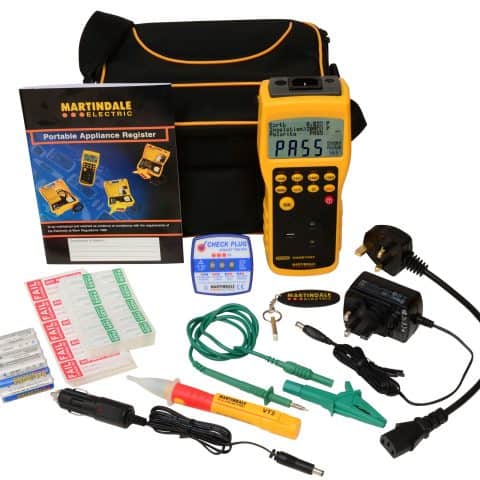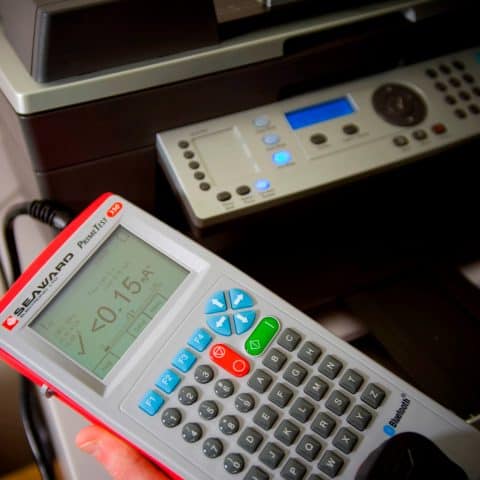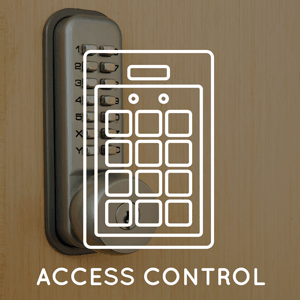

M&S Electrical
Multi-skilled electrical services contractors
 PAT TESTING
PAT TESTING
Regular PAT testing of your equipment is an important Health & Safety requirement for any business.
The day to day use of electrical appliances increases the risk of equipment becoming damaged or of a fault occurring leading to an increased danger of:
Electrical Shock – contact with a live part can lead to electric shock and burns. This can range from a minor incident through to a fatality.
Fire – electrical faults are a common cause of fire. This endangers both property, equipment, buildings and the people within them.
Regular PAT testing of your equipment can help minimize this risk.
Portable Appliance Testing (PAT Testing) is an important part of the Health and Safety practices of any business and anywhere with public access. There exists a legal responsibility under The Health & Safety at Work Act (1974), The Electricity at Work Regulations (1989), The Provision and Use of Work Equipment Regulations (1998) and The Management of Health & Safety at Work Regulations (1999) which all require electrical equipment to be maintained in safe working order. More information on these regulations can be found by visiting www.hse.gov.uk. PAT testing and the associated record keeping helps ensure compliance with these regulations. Failure to comply with your responsibility may constitute a criminal offence and should an incident occur, insurance companies may use a lack of testing records as a reason to reduce or dismiss a claim.
-
WHAT'S INVOLVED?
PAT testing incorporates an initial visual inspection and an electrical safety test. The visual inspection will often pick up the majority of faults and problems. These inspections must only be carried out by persons competent to do so and the results of the inspection must be documented. Areas we look at are as follows:
> Appliance:
– Damage to casing or loose wires
– Is the equipment working?
– Does it switch on and off?
– Is the means of disconnectionisolation accessible?
> Power Cable:
– What is its condition?
– Signs of temporary repairs
– Are the cable ends secure?
> Plug:
– Check the cable terminations secure and correct (for non-moulded plugs)?
– Is the plug cover secure (for non-moulded plugs)?
– Is a correctly rated fuse installed?
– Check for internal or external signs of damage
> General:
– Is the equipment suitable for the environment or the nature of the work being undertaken?
– If the appliance passes these initial visual checks then the electrical safety check can be carried out.
-
ELECTRICAL SAFETY CHECKS
We carry these out using a ‘Robin Smartpat 5500’ Portable Appliance Tester, which performs all tests prescribed by the HSE.
These tests are as follows:
> Earth Bond Test: This applies a test current down the earth pin of the plug to an earth probe connected to any exposed metalwork on the casing of the appliance. This checks the integrity of the earth path should a fault occur.
> Insulation Resistance Test: This applies a test voltage between the live and neutral bonded together and earth. From this, we can calculate the insulation resistance. Note: this test is not typically carried out on IT equipment.
> Flash Test: To test the appliance’s insulation, specifically for damagedrepaired devices, but rarely used as a routine test.
> Load Test: This starts the appliance as if it was being used normally and measures the power being consumed. This is to compare it to the manufacturers rating plate which should be attached to the appliance.
> Earth Leakage Test: The current flowing into the equipment is compared to the current flowing out, with any difference measured as earth leakage. This test is used in preference to the Insulation Test with IT equipment.
-
WHY IS IT SO IMPORTANT?
> Safety: Primarily regular PAT testing helps minimize the risks to users of equipment whether in a private or commercial environment.
> Law: PAT testing is also important in helping ensure that you are complying with the current laws and multiple regulations which cover the topic of electrical safety within the workplace, educational establishment, rental property, etc.
> Insurance: Many Insurance companies state that all electrical equipment must be safety tested. Failure to do this can invalidate insurance and allow insurance companies to avoid paying for claims.
> Accreditation: Complying with Quality Assurance (such as ISO 90009001 or BS5750) requires recorded compliance with current regulations. PAT testing and the recorded results that we will produce will help your business towards this.
-
WHAT ITEMS OF EQUIPMENT MUST I HAVE TESTED?
Portable appliances can be broadly identified in these terms:
> hand-held whilst being connected to the supply
> can be moved without undue difficulty whilst connected to the supply
> intended to be moved whilst connected to the supply
Please note: It is not limited to devices that only have a three-pin plug at the end. The Institute of Electrical Engineers (IEE) Code of Practice breaks down the terms into more specific areas, as follows:
Portable:
An appliance, of less than 18kg in mass, that is intended to be moved whilst in operation or an appliance which can easily be moved from one place to another. Examples include vacuum cleaners, kettles, lamps etc.
Movable (Transportable):
A non-fixed piece of equipment, of 18kg or less, intended to be moved from one location to another such as an electric fire. This also covers equipment provided with castors, wheels or other means to assist movement by the operator. For example a mobile dehumidifier.
Hand-held:
This is portable equipment intended to be held in the hand during normal use. For example power tools.
Stationary:
This equipment has a mass exceeding 18kg and is not provided with a carrying handle, e.g. a vending machine.
Fixed:
Equipment, or an appliance, which is fastened to a support or otherwise secured in a specific location, e.g. a bathroom hand-dryer.
Built-in:
This equipment is intended to be installed in a prepared area such as a cupboard or similar. In general, equipment for building in does not have an enclosure on all sides because additional protection against electrical shock is provided by the surroundings. For example a built-in electric cooker.
Information Technology (IT):
IT equipment includes mains powered business equipment such as computers and monitors as well as main powered telecommunications devices such as fax machines.
-
HOW OFTEN DOES TESTING NEED TO BE CARRIED OUT?
The IEE Code of Practice suggests the frequency of inspection and testing should take into account device usage as well as device type:
> Environment: e.g. equipment used in industry is probably more liable to damage than similar equipment used in an office.
> Type: e.g. hand-held equipment is more likely to be damaged than fixed equipment.
> Construction: e.g. Class 1 equipment is dependent on an earth connection (which can fail), Class 2 is not.
> Users: e.g. if users are fully trained on equipment and can spot and report damage then testing can be less frequent.
-
WHAT SERVICE DOES M & S ELECTRICAL (UK) LTD OFFER?
We can carry out all parts of the testing process on your behalf, with absolutely minimal disturbance.
Pat Testing Process:
> We will identify which pieces of equipment fall under the PAT testing legislation.
> We will test all identified equipment. Passes and failures will be noted in a report and labelled clearly on the device in question.
> We realize that you may prefer to have the testing carried out at a time when disruption will be minimal to staff\tenants\pupils, etc. and therefore we aim to be as flexible as possible with our appointments in order to suit your requirements.
> Basic repairs (such as cartridge fuse replacement, plug re-wiring, etc.) will be carried out on the spot by our electrician wherever possible to ensure a device passes the PAT test. Where more serious repairs are needed then we will notify you and repair options and costs can be discussed.
> Records of all your equipment and its pass\fail state will be left with you and a backup copy will be kept at our offices.
> When equipment is due for retest we will automatically notify you, ensuring you stay on the right side of legislative, accreditation and insurance requirements.
Useful links for further information:
OTHER ELECTRICAL SERVICES WE OFFER
Click below to learn more about the other electrical services that we offer.

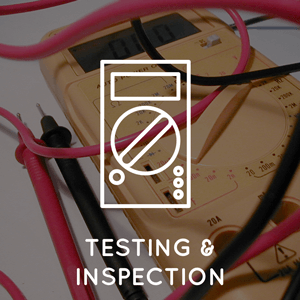

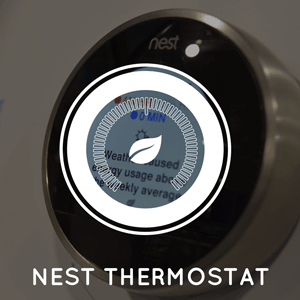
Get a Free Estimate
Get in touch with us for a free estimate on any existing or future planned electrical work, and we’ll be happy to help in any way we can.
Units 1&2, Woodland Enterprise Centre, Hastings Road, Flimwell, East Sussex, TN5 7PR

© M&S Electrical (UK) Limited | Units 1&2, Woodland Enterprise Centre, Flimwell, TN5 7PR | 01580 879611
Reg Number 04483718 | VAT reg number: 683600434 | Reg Office: 30-34 North Street, Hailsham, East Sussex, BN27 1DW
web design & development – Made By Ernie

